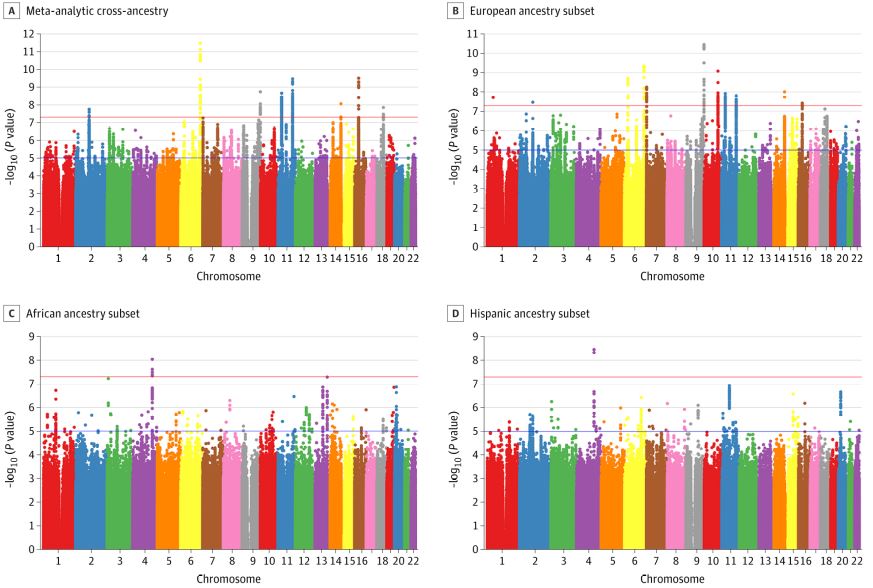
Nathan Kimbrel, PhD., associate professor Department of Psychiatry & Behavioral Sciences at Duke University School of Medicine
DURHAM, NC — Multiple genes linked to an increased risk for suicidal thoughts and behaviors in U.S. military veterans have been identified, according to a new study.
The genome wide association study published in JAMA Psychiatry was designed to determine if there is a genetic basis for suicidal thoughts and behaviors in U.S. military veterans. Though suicide is a leading cause of death, the molecular genetic basis of suicidal thoughts and behaviors remains unknown.1
This research addressed this critical gap in knowledge by conducting the largest and most diverse genome wide association study of suicidal thoughts and behaviors within the Million Veteran Program.
The study included 633,778 U.S. military veterans with and without suicidal thoughts and behaviors who were identified through electronic health records. Of the study participants, 71.4% were of European ancestry, 19.1% African ancestry, 8.1% Hispanic ancestry and 1.3% Asian ancestry. Participants were primarily male, with 9% female.
Within the group of veterans, 121,211 individuals (19.1%) had experienced suicidal thoughts and behaviors, as identified from medical records. Participants were classified as controls if they had no documented lifetime history of self-harm behaviors.
Through a genome wide analysis of blood samples, the researchers identified numerous genes that were evident among participants with documented cases of suicidal thoughts or actions, regardless of their ancestral background, according to a press release from Duke University Medical Center.
The researchers identified seven genome wide significant cross-ancestry risk loci through meta-analysis. Top loci were independently replicated in a large international cohort, the study reported. Four genes had the strongest links and have been previously associated with psychiatric conditions.
To obtain ancestry-specific results, the genome wide association study was performed separately by ancestry, controlling for sex, age and genetic substructure. Study enrollment began in 2011, and data were analyzed from November 2021 to August 2022.
The researchers note that more work is needed to replicate these findings and determine whether these genes might impact clinical care, but the findings advance the understanding of how inherited risk factors play a role in the pathology of suicidal thoughts and actions.
Heightened Risks

Click to Enlarge: Manhattan Plots Summarizing Results From the Cross-Ancestry and Ancestry-Specific Genome-Wide Association Studies. Source: JAMA Psychiatry
“It’s important to note that these genes do not predestine anyone to problems, but it’s also important to understand that there could be heightened risks, particularly when combined with life events,” co-lead author Nathan Kimbrel, PhD., associate professor in the Department of Psychiatry & Behavioral Sciences at Duke University School of Medicine, said in a press release.
The four genes identified with the strongest links, ESR1, DRD2, TRAF3 and DCC, are cross-ancestry candidate risk genes. Other psychiatric conditions are associated with these four genes, according to the press release from Duke University Medical Center.
- ESR1, an estrogen receptor, has been identified as a causal genetic driver gene of post-traumatic stress disorder (PTSD) and depression, which are risk factors for suicidal behaviors among veterans. Estrogen also is suspected as a cause of sex differences in depression rates, and loss of ESR1 has been found to produce effects on brain tissue in men.
- DRD2, a dopamine receptor, has been associated with suicide attempts, schizophrenia, mood disorders, ADHD, risky behaviors and alcohol-use disorder.
- TRAF3 is associated with antisocial behavior, substance use and ADHD. Lithium, a gold standard treatment for bipolar disorder shown to reduce suicide risk, modulates the expression of TRAF3 and several other inflammatory genes.
- DCC, which is expressed in brain tissue across the life span, has been associated with multiple psychiatric conditions and is elevated in the brains of people who die by suicide.
In addition to these genes, the researchers identified nine additional ancestry-specific risk genes.
“While genes account for a small amount of risk relative to other factors, we need to better understand the biological pathways that underlay a person’s risk for engaging in suicidal behavior,” Kimbrel said. “Suicide is the cause of over 700,000 deaths annually and is the fourth-leading cause of death among people ages 15 to 29 years old. The more we know, the better we can prevent these tragic deaths.”
While the global rate of suicide has decreased by 36% during the past 20 years, the rate of suicide in the U.S. has increased by 35%. The fastest increase has been among U.S. military veterans, where the rate has increased by nearly 50% since 2005. Suicide attempts and suicidal ideation (such as suicidal thoughts and behaviors) are robust longitudinal predictors of death by suicide and are also rapidly increasing among U.S. adults and military veterans, according to the study.
In this study, rates of suicidal thoughts and behaviors differed significantly by ancestry: 25.0% in U.S. military veterans of African ancestry; 21.2% in veterans of Asian ancestry; 16.8% in veterans of European ancestry; and 25.6% in veterans of Hispanic ancestry. Rates of suicidal thoughts and behaviors also differed by age and sex. Those with suicidal thoughts and behaviors were younger and more likely to be female.
- Kimbrel NA, Ashley-Koch AE, Qin XJ, et al. Identification of Novel, Replicable Genetic Risk Loci for Suicidal Thoughts and Behaviors Among US Military Veterans. JAMA Psychiatry. Published online December 14, 2022. doi:10.1001/jamapsychiatry.2022.3896

